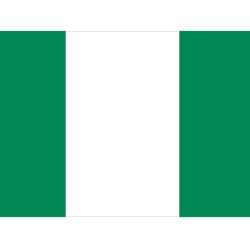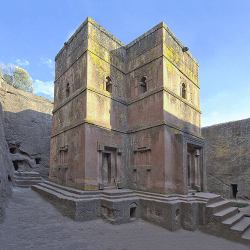Ranks and badges (symbols) in the Nigerian Army
Below is the list of Nigerian Army ranks from Recruit to Filed Marshal:
NON-COMMISSIONED OFFICERS
The Nigerian army soldiers’ non-commissioned officers ranks consists of eight ranks, ranging from Recruit to Army Warrant Officer.
- Recruit
- Private
- Lance Corporal
- Corporal
- Sergeant
- Staff Sergeant
- Warrant Officer (Former WO Class 2 – Also called a Company Sergeant Major)
- Master Warrant Officer (Former WO Class 1 – Also called a Regimental Sergeant Major)
- Army Warrant Officer (Also called a Sergeant Major of the Army, Chief Warrant Officer or Force RSM)
COMMISSIONED OFFICERS
Officer ranks in the Nigerian military also consist of commissioned officers. Commissioned officers are graduates of military academies. The commissioned ranks are the highest in the military. These officers can hold presidential commissions and are confirmed at their ranks by the army. The Nigerian army officers’ ranks consists of eleven ranks, ranging from Second Lieutenant to Field Marshal.
- Second Lieutenant
- Lieutenant
- Captain
- Major
- Lieutenant Colonel
- Colonel
- Brigadier General
- Major General
- Lieutenant General
- General
- Field Marshal
Commissioned officers badges
Second Lieutenant

The second lieutenant is the lowest commissioned officer rank in the Nigerian Army. Officers with this insignia bear one star.
Lieutenant

The next rank is the lieutenant. Officers on this rank carry two stars on their insignia.
Captain

The highest rank among junior officers. The rank of captain carries three stars.
Major

This is a senior rank. Officers who are majors carry an eagle in their insignia.
Lieutenant Colonel

A lieutenant colonel is a mid-level rank in the Nigerian army. Officers in this rank bear an eagle and a star in their insignia.
Colonel

A colonel in the Nigerian Army carries an eagle and two stars aligned vertically.
Brigadier General

A brigadier general is a flag officer and, as the name suggests, is in charge of brigades. This rank carries an eagle and three stars below arranged like a triangle.
Major General

The insignia of a major general carries an eagle with a baton and sword below it. A major general can command a division of 6,000 to 25,000 troops when appointed to a field command.
Lieutenant General

A lieutenant general is the third highest rank in the Nigerian Army. An officer of this rank can command as many as three army divisions with tens of thousands of troops. The insignia of a lieutenant general is an eagle, a star and a sword and baton, all vertically aligned.
General

A general is the second highest rank in the Nigerian Army.
The insignia of a general is an eagle, two stars and a baton and sword arranged vertically.
Field Marshal

The field marshal is the highest rank in the Nigerian Army.
The insignia is an eagle atop a crossed sword and a baton surrounded by a wreath of two branches.
Non-commissioned officers badges
Army warrant officer
Master warrant officer
Warrant officer
Staff sergeant

Sergeant

Corporal

Lance corporal

Private
NIGERIAN ARMY RANKS
Military rank is more than just who salutes whom. Military rank is a badge of leadership. Responsibility for personnel, equipment, and mission grows with each increase in rank.
The rank system forms the backbone of the army’s structure and it defines a soldier or officer’s role and degree of responsibility.
Soldiers and Officers have different rank systems.
Broadly speaking, officers have more leadership duties. However many Officers start off as soldiers, before gaining their commission. Do not confuse rank with military appointment such as Commanders, Directors etc.
Military appointments are administrative classifications used primarily to standardize duties across the military services.
The army, for example, has the ranks of Brigadier General, Colonel etc, and then appointments as Commanders, Asistant Director Finance, Command Division Finance and Accounts etc.
A Colonel is expected to fill a leadership role as a Commander with a corresponding higher military position than a fellow Colonel even though both receive the same amount of pay.
HISTORY OF NIGERIAN ARMY RANKS
The post-colonial Nigerian Army (NA) traces its origins to 1863 when British Naval Lt. Glover established “Glover’s Hausas.” He used the small force of runaway slaves to mount expeditions to the hinterland primarily to protect British trade routes. From this humble beginning the West African Frontier Force later evolved and gave birth to the Nigerian Army.
Badges of rank of the Nigerian Army are mostly patterned after those of the British army, except that the Nigerian eagle (from the Coat of Arms) replaces the British crown on insignia of officers of the rank of Majors and above. the Titles may be ranks in some Armies but appointments in others.
Some appointments are ceremonial or honorary. In the Canadian military for example, Army titles such as Canadian Forces Chief Warrant Officer, Command Chief Warrant Officer, Chief Warrant Officer of a higher formation, Base Chief Warrant Officer, Trumpet or Bugle or Drum or Pipe Major are actually ‘appointments’ rather than ranks. In the British Army examples of appointments include Chaplain-General, Colonel-Commandant, Colonel-in-Chief, Colonel of the Regiment, Quarter-Master-General, etc.














